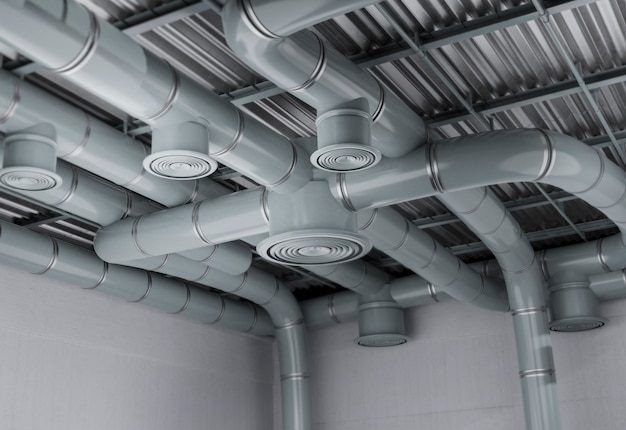In recent research conducted by Ruonan Chen, Yanling Liu, and Hongxing Dang, a crucial analysis was carried out to define prolonged mechanical ventilation (PMV) in children and to closely examine its risk factors and subsequent outcomes. Titled “Definition, risk factors, and outcome analysis of prolonged mechanical ventilation in children,” this prospective cohort study scrutinized data from children aged between 29 days and 18 years who required mechanical ventilation (MV) for more than two consecutive days. This study was implemented in two Pediatric Intensive Care Units (PICUs) at the Children’s Hospital of Chongqing Medical University from October 2020 to June 2021.
The research categorized the subjects into five groups based on the duration of MV, ranging from two to over thirty days. Researchers aimed to identify a precise milestone in the duration of MV that significantly alters clinical outcomes, designating this as the threshold for PMV. Additionally, multiple patient outcomes, including rates of extubation failure, mortality, occurrences of ventilator-associated pneumonia, requirements for tracheotomy, length of hospital and PICU stay, and overall hospital costs, were meticulously compared across these groups. Through statistical techniques like the Youden index and multivariate logistic regression, the study not only proposed a new definition for PMV at 13 days or more but also highlighted critical risk factors, thereby guiding clinicians in optimizing treatment strategies for this vulnerable population.
Understanding the implications and management of prolonged mechanical ventilation (PMV) in pediatric patients is a critical issue within critical care medicine. This concern is drawn partly from the increased survival rates of critically ill children due to advancements in medical technology and intensive care practices. With these advancements, a new set of challenges emerges, particularly related to the complications and care demands of pediatric patients undergoing extended mechanical ventilation.
Historically, the literature has been more robust in addressing adult PMV issues, with well-defined thresholds and management guidelines. In contrast, pediatric PMV has lacked a universally accepted definition, leading to variations in clinical practices and research challenges. The necessity to delineate a specific duration that qualifies as PMV in children is driven by the need to standardize care, improve prognostic estimations, and enhance the design of interventional studies targeted at this vulnerable group.
The discrepancies in the definition of PMV across various pediatric studies have ranged from ventilation lasting more than 48 hours to thresholds extending beyond 21 days. These variations significantly affect the comparability of research outcomes and the clinical strategies across different healthcare settings. Moreover, the longer children remain on mechanical ventilation, the greater the risk of developing severe complications, such as ventilator-associated pneumonia, airway damage, and psychological impacts, which further complicate their recovery process and prolong hospital stays.
The research by Chen, Liu, and Dang is positioned within this context, contributing to a nuanced understanding by attempting to establish a widely applicable clinical threshold for PMV in children. By categorizing patients based on the duration of MV and analyzing associated clinical outcomes, the study addresses a critical gap in pediatric intensive care research. This type of targeted research is essential not only for improving individual patient outcomes but also for optimizing resources and care processes in pediatric healthcare facilities.
Furthermore, understanding the risk factors associated with PMV in children helps clinicians to preemptively modify care plans or implement preventive strategies. These factors could range from the underlying diagnosis, age-specific vulnerabilities, immune status, and responses to treatment protocols. Detailed analysis of such factors aids in creating a more personalized care approach.
The outcomes associated with PMV, which often include increased mortality rates, higher healthcare costs, and substantial emotional and psychological burdens on families, highlight the need for targeted intervention strategies. Therefore, studies like the one conducted by Chen, Liu, and Dang are foundational, as they not only strive towards a standardized definition but also pave the way for future research and clinical practice guidelines that could transform care delivery for these young patients.
Thus, the research serves a dual purpose: it systematically identifies a PMV threshold that could be universally adopted, and it enhances the understanding of the clinical, economic, and emotional landscapes of prolonged mechanical ventilation in pediatric settings.
In the study conducted by Ruonan Chen, Yanling Liu, and Hongxing Dang, researchers employed a rigorous methodology to unravel the complexities of prolonged mechanical ventilation (PMV) in children. This methodology was designed to ensure accurate data collection, appropriate analysis, and comprehensive understanding of varied outcomes associated with different durations of mechanical ventilation.
The patient cohort was extracted from two Pediatric Intensive Care Units (PICUs) at the Children’s Hospital of Chongqing Medical University. All children aged between 29 days and 18 years who underwent mechanical ventilation for more than 48 consecutive hours between October 2020 and June 2021 were eligible for inclusion in the study. Patients were excluded if they had a history of chronic respiratory failure requiring home ventilation or if they died within 48 hours of PICU admission.
Data collection was meticulously planned to ensure all relevant information was captured. Key demographic and clinical data such as age, sex, pre-existing medical conditions, reason for mechanical ventilation, and length of MV were recorded. Specific attention was given to recording complications during MV, including extubation failure, ventilator-associated pneumonia, requirement for tracheotomy, and the occurrence of other MV-associated complications.
The researchers divided subjects into five groups based on the duration of MV: 2-4 days, 5-8 days, 9-12 days, 13-20 days, and over 21 days. This stratification helped in comparing outcomes across varying lengths of mechanical ventilation, facilitating a precise determination of when prolonged mechanical ventilation typically began to alter patient outcomes significantly.
Statistical analysis was conducted using a combination of descriptive statistics, multivariate logistic regression models, and the Youden index to distinguish the best cut-off point for what should be considered PMV. The Youden index, particularly, was used in this study to identify the specific point where extended duration of mechanical ventilation is most strongly associated with adverse outcomes, thus providing a robust statistic for defining PMV.
The multivariate analysis adjusted for possible confounders such as age, underlying health conditions, and severity of illness upon admission, enabling the researchers to isolate the effect of the duration of mechanical ventilation on outcomes. This analysis was crucial in identifying independent risk factors for poor outcomes associated with PMV.
Furthermore, the outcome measures were comprehensive. Clinical outcomes such as mortality rate, length of hospital and PICU stay, healthcare-associated infections, and rates of extubation failure were primary foci. Economic outcomes assessed included the overall cost of hospitalization, which is significantly impacted by prolonged PICU stays and complications. The psychological impact on families, though more challenging to quantify, was addressed through secondary data from patient records indicating extended hospitalization and its effects.
Through this detailed and methodologically sound approach, Chen, Liu, and Dang not only provided a new definition for PMV but also deepened the understanding of its determinants and impacts, setting a strong foundation for future research and clinical practice enhancement in pediatric care.
Continuing from the meticulously designed methodology described previously, the key findings of the research conducted by Ruonan Chen, Yanling Liu, and Hongxing Dang were pivotal in drawing connections between mechanical ventilation duration and the associated clinical, economic, and psychological outcomes in pediatric patients.
1. **Definition of PMV:**
The study’s first significant finding was establishing a new threshold for PMV at 13 days of continuous mechanical ventilation. This definition was derived using the Youden index from the study’s results, highlighting it as the point beyond which the risk of adverse outcomes became markedly higher. This specific duration was identified as critical and potentially a turning point that requires heightened clinical attention and resource allocation in the care management plan.
2. **Clinical Outcomes:**
Significant differences in clinical outcomes were observed across the five groups stratified by ventilation duration. As the duration of mechanical ventilation increased, there was a notable rise in the incidence of ventilator-associated pneumonia, extubation failure, and tracheotomy requirements. The mortality rate was disproportionately higher in children who received mechanical ventilation for more than 13 days. These findings emphasize the severity of prolonged ventilation’s impact on pediatric patients’ health, underscoring the PMV threshold’s clinical relevance defined by the study.
3. **Economic Impact:**
Another critical finding was the increased financial burden associated with prolonged mechanical ventilation. The study showed that hospital costs escalated with longer durations of ventilation, particularly beyond the 13-day mark. This escalation in cost is reflective not just of the extended use of hospital resources but also of the increased complexity and intensity of care required for these patients. The financial strain extends to the families and the healthcare system, highlighting an urgent need for strategies to reduce the duration of mechanical ventilation when safely possible.
4. **Risk Factors:**
Through multivariate logistic regression analysis, the study identified several independent risk factors for PMV, including younger age, presence of a severe underlying medical condition, and the severity of illness at the time of PICU admission. These factors are crucial for clinicians to consider when planning and adjusting treatment strategies, potentially leading to earlier interventions that could prevent the progression to PMV.
5. **Psychological and Emotional Burdens:**
Although quantitatively assessing psychological impact was beyond the primary scope of the study, the researchers noted the extended hospital stays associated with PMV lead to significant emotional and psychological stress for patients and their families. The burden of long-term hospitalization includes disruptions to family dynamics, financial strain, and the emotional distress of prolonged illness or recovery periods.
**Implications for Future Research and Clinical Practice:**
The findings from this study render a profound influence on future research and clinical practice. By establishing a clear and clinically significant threshold for PMV, subsequent studies can standardize their criteria for PMV, enhancing the comparability and applicability of research outcomes. Clinically, identifying risk factors and the new PMV threshold allows for earlier intervention strategies aimed at reducing the duration of mechanical ventilation.
Furthermore, these outcomes suggest a need for comprehensive care models that incorporate the findings into protocols that not only address the medical and physical requirements of prolonged ventilation but also consider economic strategies and support systems for psychological health. Future guidelines could include proactive measures for at-risk children, potentially integrating predictive models using the identified risk factors to individualize patient care plans.
In conclusion, the study by Chen, Liu, and Dang provides groundbreaking insights into the definition and impacts of PMV in children, establishing a foundation for both immediate and long-term improvements in pediatric critical care strategies and research. Their findings are a valuable asset in the continuous quest to enhance outcomes for critically ill pediatric patients receiving mechanical ventilation.
The extensive research by Ruonan Chen, Yanling Liu, and Hongxing Dang into the intricacies of prolonged mechanical ventilation (PMV) in pediatric care marks a substantial advance in the treatment and management of critically ill children. Their findings elicit a crucial conversation around refining patient care, steering the efforts toward evidence-based practices and future pediatric intensive care unit (PICU) policies.
**Future Directions in Research and Clinical Practice:**
The revelations from this study highlight several areas that warrant further investigation. Future research endeavors should focus on longitudinal studies that track long-term outcomes for children subjected to PMV, thus enabling a better understanding of the long-term consequences and recovery patterns. Such studies could explore the neurodevelopmental and psychological outcomes to create a holistic approach to recovery programs for pediatric patients. Moreover, building upon the risk factors identified, researchers can delve into genetic or biochemical markers that might predispose children to worse outcomes with PMV, potentially leading to preventive measures or alternative therapies.
Clinically, this study should prompt the development of special protocols for managing PMV that incorporate regular re-evaluation of ventilation needs and proactive measures to avert extended durations of ventilation. Healthcare systems can also invest in better ventilator technologies tailored to the unique physiology of pediatric patients, thereby minimizing the risk of ventilation-associated complications.
**Implications for Policy and Protocol Development:**
From a policy perspective, it is imperative that healthcare systems recognize the economic and emotional strains PMV places on families and the system. Policies need addressing financial support for families, ensuring economic burdens do not compromise the quality of care. Mental health support services should be integrated into PICU care, providing counseling to families and post-ICU follow-up for children.
Protocol developments should focus on multidisciplinary teams capable of implementing integrated care models that address the entire spectrum of needs for children on PMV. These teams would include specialists in respiratory therapy, pediatric surgery, nursing, psychology, and social work, ensuring comprehensive, continual, and family-centered care.
**Final Thoughts:**
Ruonan Chen, Yanling Liu, and Hongxing Dang’s pioneering study sets a new course in the understanding and management of PMV in children, proposing a refined definition that promises to streamline both clinical practice and research. By establishing an empirically-derived threshold for PMV, they provide a foundation for uniform practices and enhance the scientific rigor of pediatric care studies.
The study’s implications extend beyond immediate clinical applications, hinting at a much-needed reevaluation of how care is delivered to our most vulnerable. As we move forward, embracing these insights will not only improve outcomes for critically ill children but fundamentally shift the paradigm of care in pediatric PICUs towards a more proactive, preventive, and holistic approach.
In integrating these findings into everyday clinical practices and future research, the pediatric critical care community must keep adapting, learning, and optimizing care strategies to safeguard the health and well-being of children facing severe medical challenges. The work of Chen, Liu, and Dang is a beacon in this endeavor, lighting a path toward more effective, compassionate, and specialized care for children requiring prolonged mechanical ventilation.









